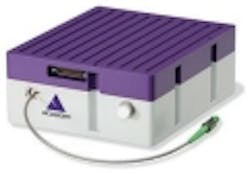Rugged 3U VPX CPU board based on 2nd Generation Intel Core processor introduced by Curtiss-Wright
ASHBURN, Va., 9 Jan. 2011. Curtiss-Wright Controls Embedded Computing (CWCEC) in Ashburn, Va., is introducing the VPX3-1256 rugged, high performance 3U VPXsingle board computer based on the new 2nd Generation Intel Core processor family for harsh-environment, air and conduction-cooled aerospace and defense embedded computing applications.. The VPX3-1256 is based on the Intel Core i7-next-generation quad-core processor.
The VPX3-1256 has a wide complement of on-board I/O, Gen2 PCI Express fabric, Serial RapidIO, and XMC expansion, and is for applications ranging from unmanned aerial and ground vehicles, to tactical aircraft and armored vehicles, to rugged naval systems. Each of the Core i7's four cores delivers 2.1 GHz of performance, providing advanced Intel Architecture processing in a lightweight, compact configuration for size, weight, and power (SWaP) constrained applications.
Available in air- and conduction-cooled configurations, the rugged 3U OpenVPX computer board combines the floating-point performance of the recently introduced Intel Core i7 processor with the substantial bandwidth and system-enabling features of the 3U OpenVPX form factor.
The board's quad-core processor features Intel's newest Advanced Vector Extensions (AVX) floating-point instructions, and is available with as much as eight gigabytes of high-bandwidth DDR3 SDRAM (1333 MHz) and comes with high-speed I/O including dual Gigabit Ethernet, Gen2 PCI Express or Serial RapidIO, four USB 2.0 ports, and an XMC/PMC site supported with eight lanes of PCI Express, which supports data flow from the VPX backplane to the XMC site to support demanding high-bandwidth applications such as the acquisition, processing, and distribution of video, radar, and sonar sensor data.
For more information contact Curtiss-Wright online at www.cwcembedded.com.
